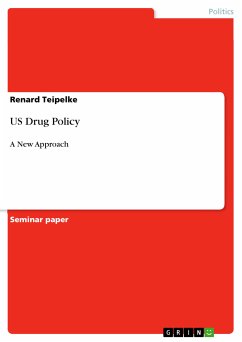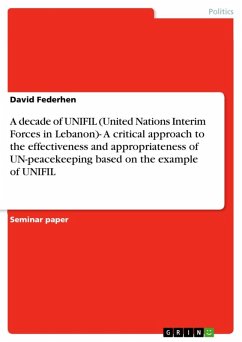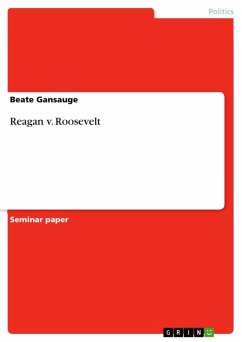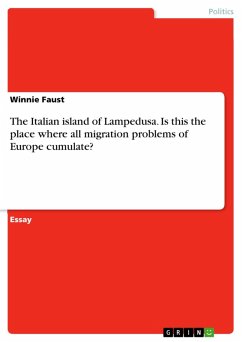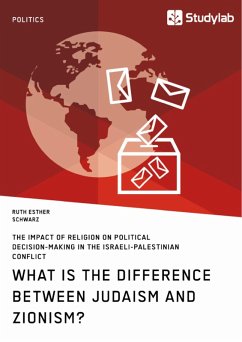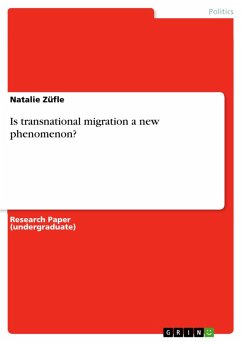
Is transnational migration a new phenomenon? (eBook, ePUB)
Versandkostenfrei!
Sofort per Download lieferbar
Statt: 15,95 €**
5,99 €
inkl. MwSt. und vom Verlag festgesetzt.
**Preis der gedruckten Ausgabe (Broschiertes Buch)
Alle Infos zum eBook verschenkenWeitere Ausgaben:

PAYBACK Punkte
0 °P sammeln!
Research Paper (undergraduate) from the year 2008 in the subject Politics - Other International Politics Topics, grade: 1,7, Free University of Berlin (Center for Global Politics), course: Migration, language: English, abstract: Transnational migration and the creation of transnational social spaces is not a new phenomenon as such. It has existed long time before it has become a fashionable desired study subject. However, when globalization took off in the 1980s, transnational ties have changed quantitatively as well as qualitatively, and thus the topic has gained in importance. Various revolu...
Research Paper (undergraduate) from the year 2008 in the subject Politics - Other International Politics Topics, grade: 1,7, Free University of Berlin (Center for Global Politics), course: Migration, language: English, abstract: Transnational migration and the creation of transnational social spaces is not a new phenomenon as such. It has existed long time before it has become a fashionable desired study subject. However, when globalization took off in the 1980s, transnational ties have changed quantitatively as well as qualitatively, and thus the topic has gained in importance. Various revolutionary technical innovations facilitated to maintain transnational contact between country of origin and the new destination on an instantaneous basis. Currently hence, such ties can be as intense as ever. The new thing about transnational migration is rather - in compliance with Glick Schiller - that scholars provided the social sciences "with a vocabulary and a framework to analyze the way in which migrants and their descendants participate in familial, social, economic, religious, political, and cultural processes that extend across the borders of nation-states" enabling scholars to "conceptualize simultaneity, the ways in which individuals settle into a new locality and also maintain various kinds of social relationships that extend into other nation-states (2006, p. 8).
Dieser Download kann aus rechtlichen Gründen nur mit Rechnungsadresse in A, B, BG, CY, CZ, D, DK, EW, E, FIN, F, GR, HR, H, IRL, I, LT, L, LR, M, NL, PL, P, R, S, SLO, SK ausgeliefert werden.





